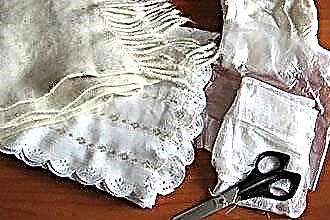A warming compress on a child's ear is a traditional method of treating ear pain associated with otitis media, hypothermia, or inflammation of the auditory nerve. Provided that the ear compress is applied to the child correctly, it is possible to reduce pain and accelerate recovery. This is due to the acceleration of blood circulation in the affected area. Thanks to this, metabolism, immune processes and the elimination of toxic products are activated. The so-called distracting effect also plays a role - warming the ear and isolating it reduces the sensation of pain and discomfort associated with congestion.
How to make a compress on a child's ear correctly? We will tell you about the different types of compresses, their advantages and disadvantages. The technique of placing a warming compress on a child's ear will also be described in detail.
Indications for use

A compress is placed on the child's ear for pain in the ear. The main indication for the use of this remedy is acute catarrhal otitis media. What is this disease?
Otitis media is an inflammation of the middle ear. The adjective "catarrhal" indicates that the main role in the pathogenesis of the disease is played by inflammation of the mucous membrane - catarrh. Inflammation of the mucous membrane of the middle ear is accompanied by edema, accumulation of exudate (fluid produced by the glands of the mucous membrane), an increase in sensitivity to various stimuli - temperature changes, sharp sounds, etc. Most of the symptoms of otitis media are associated with edema and accumulation of exudate:
- a feeling of ear congestion;
- popping, crackling, tinnitus;
- headache (due to increased pressure in the middle ear cavity);
- severe ear pain.
Why does otitis media develop? The main cause of this disease is infection, most often bacterial. Inflammation of the mucous membrane is caused by opportunistic human microflora, primarily staphylococci and streptococci. Their multiplication in the ear cavity causes a number of changes in the functioning of the body. So, in children, against the background of otitis media, body temperature often rises, nausea, and lack of appetite are worried.
In acute catarrhal otitis media, complex treatment is necessary - antibiotics, vasoconstrictor nasal drops (they relieve the congestion of the Eustachian tube and facilitate the outflow of fluid from their ear).
Warming compresses can be an effective adjuvant, but they do not work on infection.
Also, warming is used for ear congestion after hypothermia, as an urgent prevention of otitis media. This method of treatment can also be used for neuritis of the auditory nerve, but only after consulting a doctor.
Contraindications
Warming up the ear does not always have a positive effect on the course of the disease. For example, with purulent otitis media, heating is fraught with increased production of pus and its leakage into the cranial cavity associated with the middle ear canals.
With purulent otitis media, any heat effects, including warming up with compresses, are strictly contraindicated.
How to understand that you have purulent otitis media? This is indicated by the following symptoms:
- severe throbbing ear pain;
- sometimes pus flows out of the ear canal - check this with a tissue or cotton swab;
- body temperature reaches 38.5-39 C;
- a feeling of increasing pressure in the sore ear;
- dullness of hearing.
Warming up should not be carried out in patients with fever.
Contraindications also include age up to 1 year, the presence of skin diseases in the ears (psoriasis, eczema, furunculosis, etc.) and perforation of the tympanic membrane.
Types of warming compresses
Warming compresses are a three-layer bandage applied to the disturbing area of the body in order to preserve internal heat and deeply warm the tissues. They consist of the following layers:
- The first layer applied directly to the skin is wet. This is a gauze napkin folded 6-8 times. Its size should be slightly larger than the area of the child's auricle (approximately 10x10 cm). A longitudinal incision is made in the center of the napkin, corresponding to the length of the auricle. This layer is impregnated with various liquids - alcohol, vodka, oil, etc.
 The second layer serves to isolate the wet layer. It prevents the liquid from evaporating, draining, and also retains the heat generated by the body. As an insulating layer, special paper for compresses is used, which can be purchased at the pharmacy. At home, you can replace it with cling film or parchment paper. An auricle incision is also made in the center of the insulating layer.
The second layer serves to isolate the wet layer. It prevents the liquid from evaporating, draining, and also retains the heat generated by the body. As an insulating layer, special paper for compresses is used, which can be purchased at the pharmacy. At home, you can replace it with cling film or parchment paper. An auricle incision is also made in the center of the insulating layer.- The outer layer is called insulating. It is made from a dense layer of cotton wool several centimeters larger than the underlying layers (approximately 14x14 cm).
Depending on the liquid with which the wet layer is impregnated, the following types of warming compresses are distinguished:
- Compress on a child's ear with vodka
A vodka compress on a child's ear can be used from the age of 5. The strength of vodka is approximately 45 degrees. Alternatively, you can use ethyl alcohol 96%, diluted three times with water. Thus, the strength of the resulting solution will be close to 30 °.
It is believed that the use of a 30-40 degree alcohol solution is optimal for making a compress for a child from 4 years old.
- Alcohol compress on the ear of a child
Heating with undiluted alcohol (96%) is practically not used, since pure alcohol evaporates very quickly and does not warm well. You can use 70% alcohol, but only if the child has reached adolescence. Remember that alcohol is absorbed through the skin into the bloodstream and is toxic.
- Oil compress
Soaking the wet layer with gauze is used to prepare compresses for children under 4 years of age.
The oil forms a film on the skin that prevents sweat evaporation and heat transfer. Thanks to this, the ear is warmed up by its own internal heat.
You can use an oil wet layer even at an older age.
How to put a compress - instructions
How to make a compress on the ear of a child? It turns out it's not difficult at all. Just follow the instructions in this article.
Preparatory stage:
- Explain to the child the purpose and content of the warming up procedure, calm him down.
- Take a small child in your arms, a large one - sit on a chair.
- Wash your hands and dry them.
- Collect the child's hair, open the area around the ears as much as possible. If the child has pierced ears, the earrings should be removed.
- Prepare whatever you need - gauze pads, compression paper or cling film, cotton wool, scissors, diluted alcohol, or vegetable oil.
Setting the compress:
- Dampen a gauze pad with diluted alcohol or oil.
- Squeeze out the excess fluid and place the tissue around the baby's ear. The wet layer is ready.
- Cover the damp cloth with insulating material (film or special paper). The ear canal should be open, that is, the film should not be applied to the auricle, but around it.
- Apply a layer of cotton wool covering the damp and insulating layer.
- The layers should be fixed with a bandage. The bandage should fit snugly against the head, and at the same time not squeeze it.
The compress is applied for 3-6 hours. A couple of hours after setting, make sure the bottom layer is still moist and warm. If it is dry and cold, then the bandage was not applied correctly.
After the procedure, the skin around the ear is wiped with cotton wool or a napkin. If oil has been used, wash it off with warm soapy water. The child should wear a hat or headscarf.For a couple of hours after warming up, you should not play active games and go outside.
Compresses can be applied twice a day, but should not be left on the skin for more than 6 hours. If your child has itching or ear pain, see a doctor.

 The second layer serves to isolate the wet layer. It prevents the liquid from evaporating, draining, and also retains the heat generated by the body. As an insulating layer, special paper for compresses is used, which can be purchased at the pharmacy. At home, you can replace it with cling film or parchment paper. An auricle incision is also made in the center of the insulating layer.
The second layer serves to isolate the wet layer. It prevents the liquid from evaporating, draining, and also retains the heat generated by the body. As an insulating layer, special paper for compresses is used, which can be purchased at the pharmacy. At home, you can replace it with cling film or parchment paper. An auricle incision is also made in the center of the insulating layer.

